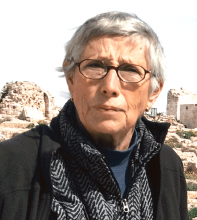You are here
Yet another Hulagu
Aug 02,2014 - Last updated at Aug 02,2014
Instead of celebrating the rites of the Arab Spring with freedom, democracy and good governance, the region has entered a dark season of war and destruction comparable to the era when the Mongol leader Hulagu besieged and sacked Baghdad. In 1258 Hulagu’s forces committed mass atrocities and destroyed the vast libraries of the Abbasid caliphate, burning and throwing books, including copies of the Koran, into the Tigris River. A surviving copy is on display in the library of the Gailani mosque in the Iraqi capital. The assault on Baghdad, once the most civilised capital on the face of the globe, ended Islam’s Golden Age personified by Caliph Harun ar-Rashid who ruled from 786 to 809.
The looting of the Iraqi national museum after US forces conquered Baghdad on April 9, 2003, prompted politicians, pundits and archaeologists to declare that a new Hulagu, brutal and ignorant of civilisation, was in charge in Iraq. He was US Defence Secretary Donald Rumsfeld who claimed that the pillage at the museum, unprotected by US tanks sitting on the street nearby, was not as bad as reported in the media. In his view, looting was “part of the price” Iraqis must pay for liberation and a result of the “pent up feelings” of those denied their freedom by the fallen Baathist regime.
“Freedom’s untidy and free people are free to make mistakes and commit crimes and do bad things.” Looting, he said, is common in countries facing unrest. “Stuff happens,” Rumsfeld said.
What has happened in and to Iraq since Rumsfeld tried to justify the criminal carelessness of the US occupying forces is almost certainly even more horrendous that what transpired after Hulagu took Baghdad. The US imposed ethno-sectarian rule on a country formerly governed by secularists and installed a fundamentalist Shiite regime in Baghdad. The Sunni reaction was to resist but this brought about the infiltration into Iraq of Al Qaeda, the movement that carried out the attacks on New York and Washington in 2001.
The policies of isolating and marginalising Sunnis adopted by Shiite fundamentalist Prime Minister Nouri Al Maliki, who has been supported by the US as well as Iran, have led to a Sunni revolt that has brought into power a Hulagu worse than Rumsfeld.
The new Hulagu is Abu Bakr Al Baghdadi, self-appointed “Caliph Ibrahim,” born Ibrahim Awwad in Samarra in 1971. His hordes, styled the Islamic State in Syria and the Levant (ISIL) or, now, the Islamic State (IS), include Saudis, Libyans, Tunisians, Chechens, and Egyptians as well as Iraqis and Syrians. Unfortunately, the ISIL-IS has enjoyed the support of deeply alienated Iraqi Sunnis — ex-army officers, tribesmen, former Baathists, and the Naqshabandi army — men whose objective is inclusion in the new Iraqi order not the creation of an “Islamic state” as defined by “Caliph Ibrahim,” a former mosque clerk.
Like the “Just” and “Enlightened” Harun ar-Rashid, Awwad has made his capital at Raqqa in north central Syria. There men are required to perform every prayer, women to cover completely and stay at home, thieves’ hands are cut off, and women stoned to death for adultery. Executions by headshots and decapitation of captured government soldiers and fighters from rival anti-regime militias are videoed and posted on YouTube. Defectors are killed. Christians forced to pay a tax or convert have fled, their churches closed or taken over.
Monuments have been destroyed and public squares and parks walled off to prevent citizens from congregating in the evenings as they used to do. Black flags fly from public buildings.
When the IS captured the northern Iraqi city of Mosul in June, Christians, Turkmen, and Kurds were expelled. Following in the footsteps of the Afghan Taliban which blew up the ancient Bamiyan buddhas, the IS has destroyed the iconic Sunni mosque of Jonah, the prophetic figure revered by Muslims, Christians and Jews as he survived being swallowed by a whale. The tomb of Daniel, the biblical figure imprisoned with a lion, was destroyed and the Shrine of Seth, said to be the third son of Adam and Eve, was also blown up. IS was prevented from mining al-Hadba minaret of the Great Mosque in Mosul but it flattened the 14th century mosque that houses the tomb of St. George. Even Hulagu Rumsfeld did not wreak such havoc.
How long are the IS’ nationalistic Iraqi allies going to tolerate its abuses of the population and destruction of Iraq’s ancient, Islamic and Arab cultural heritage?
Meanwhile, Israel continues to bombard Gaza and slay innocent civilians with the aim of defeating the last spark of Palestinian resistance to its crude and cruel occupation, either 66 years or 47 years old, depending when the outset is calculated.
Israel is a highly experienced Hulagu. During its war of establishment in 1948-49, Israel’s underground army destroyed and depopulated more than 400 Palestinian towns and villages. While Gaza was not captured then, Israel drove 200,000 Palestinians from the district and coastal towns and villages into the narrow coastal strip, trebling its population. Today 1.8 million Palestinians live in Gaza, 80 per cent of refugee stock and half below the age of 18. Gazans, their homes, hospitals, schools, beaches, government buildings, and mosques are being deliberately targeted. More than 1,600 Palestinians have been slain and 6,500 wounded in this round of Israel’s decades-long war on Gaza, the fourth since 2006 — which took place before Hamas seized control of the strip.
As for Gaza’s ancient, Islamic, and Ottoman cultural heritage, most was pulverised long ago by the boots of the conquering armies that marched up and down the Palestinian coast between Egypt and Syria.













